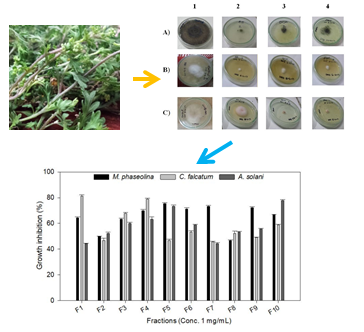Hafiza Noreen
National Textile University, Pakistan
Title: Evaluation of antifungal and antibacterial activity of aerial parts of Coronopus didymus against phytopathogens
Biography
Biography: Hafiza Noreen
Abstract
Fungi and bacteria are the most important phytopathogens that infect many plants in terms of growth and productivity, thereby causing significant economic losses in agriculture. The objective of this study was to evaluate the in vitro antifungal and antibacterial activity of various extracts of Coronopus didymus against phytopathogens. Phytochemicals of the aerial parts of C. didymus were extracted by maceration using solvents of different polarity. The ethanol extract was further fractionated to afford three flavones (1-3) by size exclusion chromatography. The antifungal and antibacterial susceptibility of various solvent extracts, fractions and isolated flavones was determined using poisoned food technique and disc diffusion method, respectively, against three fungi (Macrophomina phaseolina, Colletotrichum falcatum and Alternaria solani) and two bacteria (Streptomyces scabies and Xanthomonas campestris). Most effective antifungal and antibacterial activities were recorded for ethanol extract of C. didymus against M. phaseolina (percentage inhibition =87.8%) and X. campestris (zone of inhibition =14 mm), respectively. Compound 3 (5,7,4'-trihydroxy-3'-methoxy flavone) showed largest percentage inhibition (86.7%) against A. solani, which was even higher than the chemical fungicide, propineb (83.3%). Compound 3 depicted largest zone of inhibition (15 mm) against X. campestris, which was even higher than the chemical bactericides viz., bismerthiazole and kasugamycin, with inhibition zone of 11 mm and 14 mm, respectively. In conclusion, the isolated flavones are potent antifungal and antibacterial agents with broad spectrum of activity against phytopathogens.


